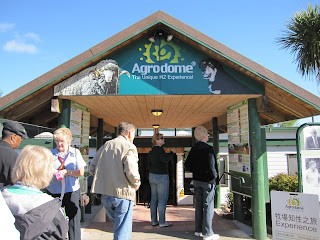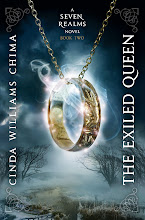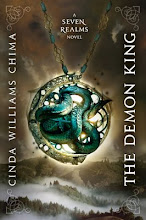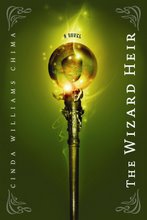Do you ever find yourself sounding like your parents? It’s scary, man.
A year or so ago I did a bookstore appearance in Frisco, Tx. An aspiring writer who’d friended me online was there with her mother. During the Q&A, the mom raised her hand and said, “Don’t you think that someone who wants to be a writer should also get a degree in a field where they can actually make a living? To fall back on, I mean?” During this, her daughter glared at her mother in a way that said, My life is over, and it’s your fault.
“Great,” I said. “There’s no way I can answer this without getting into trouble.”
Last week, a boy emailed me to say, “I’m in middle school, and I would like to be a writer when I grow up. Can you tell me, on average, how much writers make in a year?” The boy was planning ahead for poverty.
And then, recently, at a writing workshop, a mother told me that her eleven-year-old daughter was a talented writer. She asked for my advice.
“Well,” I said, “it’s great that she’s already writing. She should keep that up, and read as much as possible, too. And she should choose a career that will support her while still allowing her time and energy to write.”
The mother looked taken aback, like I was in the business of killing dreams and kittens. “Don’t you think that would be very difficult?” she said. “To try to write while working a day job?”
Well, yes, I thought. It is difficult. And exhausting. I speak from experience.
“I want her to be able to focus on writing,” the mother went on. “We’re more than willing to support her until she gets established.”
As if that wouldn’t be a high pressure situation.
I’m not exactly a model of career planning and efficiency. I mean, really—my first degree is in philosophy. Finding it difficult to secure employment as a philosopher, I took a post-bacc and master’s in nutrition and practiced as a dietitian for years.
I began to write, yes, as a second job, although in the beginning I could have worked retail and made more reliable money.
I recommend that beginning writers plan for a day job for several reasons. Firstly, of course, to buy food, shelter, Internet access, books, and subscriptions to writing magazines. Secondly, day jobs provide an alternative place to achieve those small successes that keep us going. Maybe you’ve just received your twenty-fifth rejection for a novel that took three years to write. But maybe you’ve also completed a fabulous project at work or seen understanding kindle in a student’s eyes.
Planning ahead may mean you can choose a career that doesn’t suck up your time and wring out your soul, leaving you in no condition to write. Professionals are better able to request flexible schedules and can make more money doing part time work. Some writers choose to work in a field aligned with writing—teaching English, say, or business writing. Others prefer the perspective of doing something completely different. For some, the day job is raising children when someone else in the household brings in an income.
Don’t overlook the fact that other careers can provide you with grist for the writing mill. Lawyers and doctors often turn to writing fiction and nonfiction related to their areas of expertise.
But the most important reason for having a day job as a writer is that it prevents the quest for money from killing your love of the craft. It allows you to enjoy your writing, to follow the muse wherever it takes you. It gives you the freedom to become the best writer you can be without feeling like you constantly have to hustle for a buck.
It’s bad enough to have your work rejected without facing eviction as a result. And it’s easy to devalue your writing when you are desperate for a sale and it’s not happening. There’s so much we don’t control about success as a writer. Talent and hard work are necessary but not sufficient for success. Desperation can squeeze the joy right out of your art.
That said, if you want to transition into writing full time, do your homework, set up a plan and work it. It also helps to marry someone with insurance.
I used to do a lot of freelancing, which brought in some money. I made a conscious decision to turn away from that and focus on novels, even though I knew there was a chance I would never make a dime. But I knew that freelancing would always be a part time gig. I could never make enough freelancing to leave my day job.
That was in 2002. My first novel was published in 2006. My fourth book is coming out this week.
I left my day job in May, 2008.
Wednesday, December 23, 2009
Friday, December 11, 2009
Dangerous Australia
There are no poisonous snakes in New Zealand, nor scorpions nor deadly spiders, either. That’s a plus, in my eyes.
 Australia is different—it is home to more poisonous snakes, frogs, spiders, lizards, stingrays, jellyfish, vertebrate fish, and other dangerous creatures than anywhere else on earth.
Australia is different—it is home to more poisonous snakes, frogs, spiders, lizards, stingrays, jellyfish, vertebrate fish, and other dangerous creatures than anywhere else on earth.It’s become politically incorrect in the U.S. to demonize animals—even dangerous predators—as vicious killers. We even tend to romanticize businesslike kill-or-be-killed lifestyles. Nothing personal, but I’m above you on the food chain.
Australians, on the other hand, seem to embrace the dangers of life in the bush with relish.
It reminds me of the old Crocodile Hunter show—“These are the most DANGEROUS animals in the world!” And it was true in his case—he died of a stingray sting in the chest.
While in Sydney, I stopped in at Galaxy Bookstore, a specialty sci-fi and fantasy bookstore. I was chatting with one of the clerks, and said I was just beginning a tour of Australia.
“Watch yourself out there,” she advised me. “There’s lots of snakes.” Meaning, don’t let down your guard, even though right now you’re in the middle of a major metropolitan area.
Turned out she knows what she’s talking about. She’s specializing in reptile studies at university. Seems like a good field to go into down under.
We visited Sydney Wildlife World, which was teeming with deadly creatures—dangerous birds, snakes, lizards, insects—you name it. In case you missed anything, lurid warning signs highlighted the most dangerous creatures on display.
Not enough worries? Across the way was the Sydney Aquarium, displaying deadly denizens of the deep.
Whatever the topic, it seemed to stray onto deadly subject matter. The guide at the seemingly low-risk koala breakfast explained to us the difference between poison and venom. “Venom works through the bloodstream,” she said. “It’s injected. Poison, on the other hand, can be ingested in different ways. We can touch a poison frog, eat a poison mushroom, breath in poisonous gases or brush a poison plant. Got that?”
Remember the Foolhardy Family? They wouldn’t last a minute in Australia. Get past the fauna, and the flora and the terrain is dangerous, too—blistering deserts, unpredictable seas and shipwreck coasts, bottomless crevasses, unstable cliffs, and poisonous plants. Of all the rogue introduced plants, it seems the only ones that have caught on are the noxious ones.
 I’m a writer. My fertile imagination tells me there’s danger everywhere. I hiked through Alaska, singing at the top of my lungs, to drive off the bears. I walked through Florida wetlands scanning the underbrush for wolf spiders and alligators. I hiked through the “national forest” – ha! – desert in New Mexico, my eyes darting to either side, searching for rattlesnakes.Never thought I'd have to watch out for the lizard in the laundry room!
I’m a writer. My fertile imagination tells me there’s danger everywhere. I hiked through Alaska, singing at the top of my lungs, to drive off the bears. I walked through Florida wetlands scanning the underbrush for wolf spiders and alligators. I hiked through the “national forest” – ha! – desert in New Mexico, my eyes darting to either side, searching for rattlesnakes.Never thought I'd have to watch out for the lizard in the laundry room!My advice: Watch yourself out there—it’s a dangerous world.
Monday, December 7, 2009
I'll be at Barnes & Noble Woodmere December 14!!
I'll be signing books at the Barnes & Noble at Eton Collection for the Shaker Heights Middle School Bookfair on Monday, December 14, from 7 to 9 p.m. Other local authors will be there. Come hang out!
Sunday, November 29, 2009
Good News Headlines!
The Demon King Releases in the UK February 4 and Australia March 1!
The Demon King is named to the Indie Next Winter 2010 List!
The Demon King is named to the Lone Star Book List 2010!
I’ve been gone a while, so time to catch up on some news. The Demon King is pubbing in the UK from Harper-Collins Voyager with this cover
Which is the same art as the Dutch version.
This is my second book to make the Lone Star list (The Warrior Heir was on it) and my first book to be named to the Indie Next list. Here’s a shout out and thank you to independent booksellers and librarians in Texas!
Friday, November 27, 2009
A Winter in Fiji
OK, so I went to Fiji, and it was frickin’ freezing It wouldn’t be so bad except that my expectations were so very different. We planned to launch our journey to Australia and New Zealand with two days baking in the Fijian sun, recovering from jet lag. Instead, we departed the airport in a fine rain that continued all day, off and on. Gamely, I plastered on sunscreen and headed out to the beach in my shorts and tee shirt. Gale force winds blew in from the sea, sending surf crashing up over the reef a short distance out. Gray clouds boiled over the horizon as resort staffers nailed up storm shutters. Before long, I had layered on a hoodie and eventually gave up and put on long pants again. It was more Lake Superior than the South Pacific.
Apparently the sun shines here sometimes. I have travel brochures to prove it.
Mind, this is nothing new for me. I’m used to traveling places and having people say, “Sheesh! This is unusual. I’ve never seen it snow this time of year!” Or, “Thank God the drought has broken.” I once went tent camping in the Painted Desert—a places that gets only 7 inches of rain a year. Two inches came down the night we camped—causing a massive hatching of Mormon crickets. As they scratched against the tent, trying to get in, I was sure we were being invaded by an army of half-drowned scorpions.
Looking for unusual weather? Tired of the same old same old? Invite me to come visit.
Apparently the sun shines here sometimes. I have travel brochures to prove it.
Mind, this is nothing new for me. I’m used to traveling places and having people say, “Sheesh! This is unusual. I’ve never seen it snow this time of year!” Or, “Thank God the drought has broken.” I once went tent camping in the Painted Desert—a places that gets only 7 inches of rain a year. Two inches came down the night we camped—causing a massive hatching of Mormon crickets. As they scratched against the tent, trying to get in, I was sure we were being invaded by an army of half-drowned scorpions.
Looking for unusual weather? Tired of the same old same old? Invite me to come visit.
Thursday, November 19, 2009
Uninvited Guests
Our hotel at Yulara Resort in outback Australia is beautiful—definitely a three-wastebasket facility. But I noticed an interesting information card in the bathroom. It was titled “Uninvited Guests.”
You may notice one or two uninvited guests. Please do not be alarmed, they are native to the area and it is quite normal for them to appear throughout the resort. If, however, you are disturbed by their presence, please contact reception.
You may notice one or two uninvited guests. Please do not be alarmed, they are native to the area and it is quite normal for them to appear throughout the resort. If, however, you are disturbed by their presence, please contact reception.
It was unusually circumspect, like they didn’t want to frighten you by actually naming some of the uninvited guests you might encounter. However, its lack of specificity invited worrisome speculation as to what kinds of uninvited guests to expect. Sneak thieves? Freeloading relatives? Late night partiers?
Or maybe they meant intruders from the natural world. Dingoes or wallabies? Rose-breasted cockatoos, who flew in colorful and gossipy flocks from tree to tree, but which our tour guide described as pests. Cockroaches or cane toads? Deadly poisonous snakes or scorpions or spiders (we are in the Australian desert, after all.) Maybe the notice referred to the little clouds of flies we take with us everywhere?
Or possibly they meant the three-foot long goanna lizard I encountered in the laundry room.
Tuesday, November 17, 2009
Sheepish in New Zealand
We get an introduction to all things sheep at the Agrodrome, an agricultural demonstration show in Rotorua.
A mulleted host in a wifebeater comes out on stage, telling jokes as his comely assistant leads out nineteen different breeds of sheep, from Merinos to Lincolns to Romneys. I remember some of the names from my spinning and weaving days.
A sheep shearing demonstration follows. A wary ewe emerges from a doorway on stage right. After a few moments struggle, the host deftly flips her onto her back, where she sits, legs dangling foolishly in front of her. Perhaps closing her eyes and thinking of England, she allows the shearer to have his way with her. In less time than it takes me to get a haircut, the fleece is razored off and the sheep looks about half its original size.
When he asks for volunteers for milking, I impulsively raise my hand and join the other two victims on the stage. After all, I’m scheduled for a farmstay the next day, and I might need me some skills. Last time I volunteered and was called up on stage, it was for a wine-tasting. And that worked out all right.
Happily, we are milking a cow instead of a sheep. Somewhere, I’ve read tips for successful milking. Or maybe it was those lactation pamphlets I read after my sons were born.
This cow’s udder has been liberally greased up with some unknown farm substance. I don’t know if this is intended to make it harder or easier. Trying to remember the particulars, I grasp the udder firmly at the top and strip my hand downward, using my best empty toothpaste tube technique. Success! A thin stream of blueish milk splashes into the pail. The host looks mildly surprised and a little disappointed. I receive a certificate of “udderance.”
There follows sheepdog demonstrations in which one of the dogs herds several ducks back and forth across the stage and other dogs race across the backs of the mildly interested sheep in a technique called, understandably, backing. It’s kind of like a sheep mosh pit. It’s unclear whether this has any practical purpose but it makes for interesting and difficult to interpret photos.
I am convinced that nobody loves his work like a sheepdog. If they were any more alert and eager they would explode. They ought to show videos of sheepdogs at employee meetings instead of hiring motivational speakers.
The show closes with a mock fleece auction in which a reluctant Korean woman ends up owning an armload of unwashed wool redolent of lanolin. Then everyone repairs outside for a sheepdog demonstration with actual sheep.
All in all, I had a great time, but I think I have more of a future in wine-tasting.
A mulleted host in a wifebeater comes out on stage, telling jokes as his comely assistant leads out nineteen different breeds of sheep, from Merinos to Lincolns to Romneys. I remember some of the names from my spinning and weaving days.
A sheep shearing demonstration follows. A wary ewe emerges from a doorway on stage right. After a few moments struggle, the host deftly flips her onto her back, where she sits, legs dangling foolishly in front of her. Perhaps closing her eyes and thinking of England, she allows the shearer to have his way with her. In less time than it takes me to get a haircut, the fleece is razored off and the sheep looks about half its original size.
When he asks for volunteers for milking, I impulsively raise my hand and join the other two victims on the stage. After all, I’m scheduled for a farmstay the next day, and I might need me some skills. Last time I volunteered and was called up on stage, it was for a wine-tasting. And that worked out all right.
Happily, we are milking a cow instead of a sheep. Somewhere, I’ve read tips for successful milking. Or maybe it was those lactation pamphlets I read after my sons were born.
This cow’s udder has been liberally greased up with some unknown farm substance. I don’t know if this is intended to make it harder or easier. Trying to remember the particulars, I grasp the udder firmly at the top and strip my hand downward, using my best empty toothpaste tube technique. Success! A thin stream of blueish milk splashes into the pail. The host looks mildly surprised and a little disappointed. I receive a certificate of “udderance.”
There follows sheepdog demonstrations in which one of the dogs herds several ducks back and forth across the stage and other dogs race across the backs of the mildly interested sheep in a technique called, understandably, backing. It’s kind of like a sheep mosh pit. It’s unclear whether this has any practical purpose but it makes for interesting and difficult to interpret photos.
I am convinced that nobody loves his work like a sheepdog. If they were any more alert and eager they would explode. They ought to show videos of sheepdogs at employee meetings instead of hiring motivational speakers.
The show closes with a mock fleece auction in which a reluctant Korean woman ends up owning an armload of unwashed wool redolent of lanolin. Then everyone repairs outside for a sheepdog demonstration with actual sheep.
All in all, I had a great time, but I think I have more of a future in wine-tasting.
Subscribe to:
Posts (Atom)























